1952: Television broadcast for first time in Scotland, 70 years ago
and live on Freeview channel 276
Friday, March 14, 1952 was the historic day Scotland was able to switch on and tune in for the very first time.
The funeral of King George VI in February 1952 had been broadcast to some households, but the official launch came a few weeks later when the Kirk O’Shotts transmitter was officially declared open.
Advertisement
Hide AdAdvertisement
Hide AdIn keeping with the times, it was a very formal affair with the great and the good making speeches, followed by a blessing from senior members of the church.
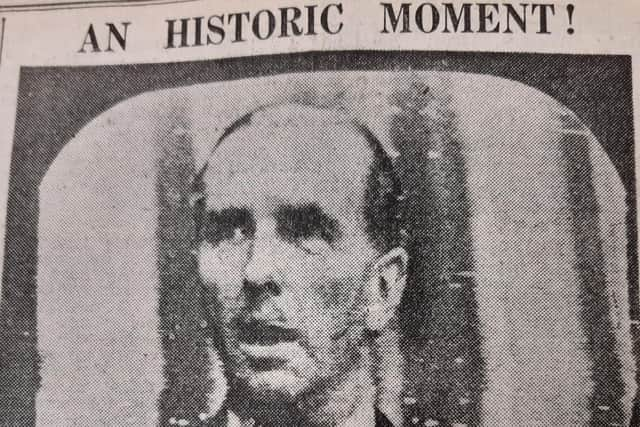

And the entertainment had a distinctly Scottish feel to it.
A two-page feature appeared in many newspapers, explaining how television was broadcast - and how sets were operated as three million Scots took their first steps into a whole new world.
A medium power transmitter was first used, but, by the winter of 1953, a high power transmitter was promised to give wider coverage to those with a visual line from their homes to the top of the 750-ft mast at Kirk O’Shotts.
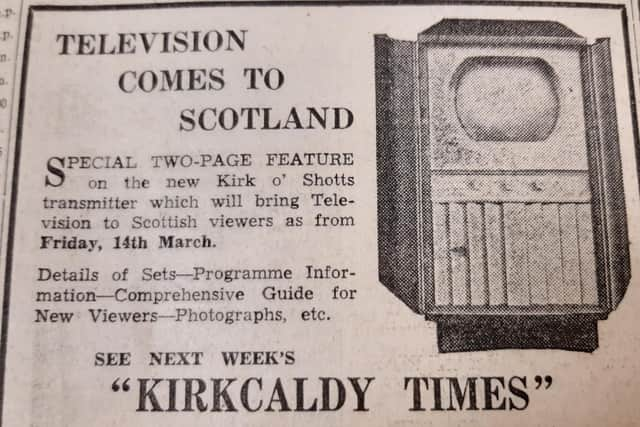

It stood on a ridge 900-feet above sea level on the main Edinburgh-Glasgow road, and the success of broadcasting footage of the monarch’s funeral gave encouragement to the hope of wide and satisfactory coverage across central Scotland.
Advertisement
Hide AdAdvertisement
Hide AdReception in the Kirkcaldy area was said to be very successful, and there was keen interest in the television sets for sale in many stores.
A 12-inch table top Phillips model cost 69 guineas, and hire purchase started at 16s. weekly.
Many television sets came in exquisite walnut cabinets, and shops offered daily demonstrations to potential buyers who were perhaps unsure of how it operated after a generation had grown up listening to the wireless.
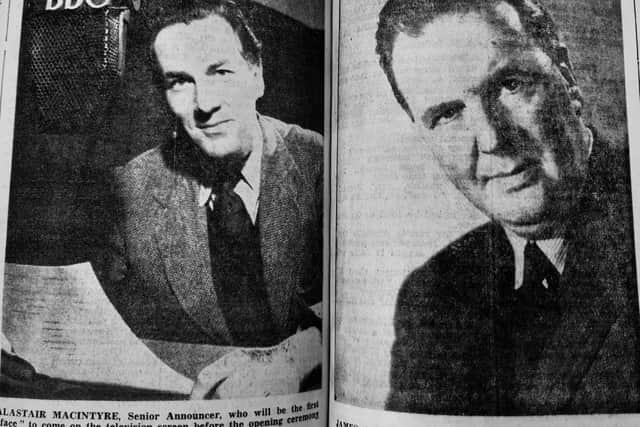

The opening show was steeped in formality.
It came from Broadcasting House in Edinburgh and commenced with Scotland’s chief announcer, Alastair Macintyre introducing Lord Tedder, vice chair of the Board of Governors of the BBC who then invited the Rt Hon James Stuart MP , Her Majesty’s Secretary of State for Scotland, to declare the television service open.
Advertisement
Hide AdAdvertisement
Hide AdA picture taken of him addressing the nation was also a landmark for the Fife Free Press - it was the first photo which appeared in print just hours after being taken at a live event.
Photographer Jim Smith captured the moment in the showroom at Oliver Melville & Company in High Street, Kirkcaldy.
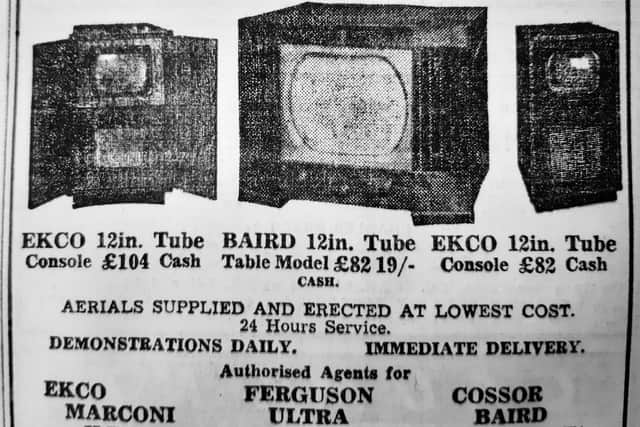

The speech was followed by a prayer of dedication by the Very Reverend Charles L. Warr, Dean of the Thistle and Chapel Royal, and a vote of thanks came from the Rt Hon James Millar, Lord Provost of Edinburgh.
This was followed by the first visual transmission of Scottish Country Dancing, when members of the Royal Scottish Country Dance Socety performed three dances.
Advertisement
Hide AdAdvertisement
Hide AdIt was followed by Kaleidoscope at 8:15pm, when a listener from Prestwick took part, and the ‘In The News’ featured Sir Will Y. Darling, MP for South Edinburgh, and Hector MacNeil, the former Secretary of State for Scotland.
At 10:15pm, in the ‘Speaking Personally’ series the distinguished Scottish actor, Alistair Sim gave his first impressions of television.
Religion was to the fore on Sunday with an evening service televised from St Cuthbert’s Parish Church, Edinburgh.
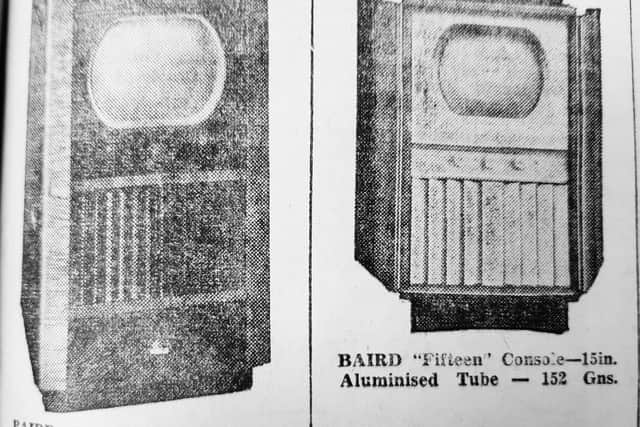

It was a fitting location because since the early days of broadcasting when the capital had its own station with the call sign 2EH, St Cuthbert’s has been played a prominent role.
Advertisement
Hide AdAdvertisement
Hide AdThe service was conducted by its ministers, the Right Rev William White Anderson, Moderator of the General Assembly of the Church of Scotland, and the Rev Adam Barnet.
In midweek there was a play performed by Glasgow Citizen’s’ Theatre Company, and
Burl Ives, the American star of stage and screen, gave a recital of folk songs.
The launch of television was ushered in with a helpful Q&A.
Advertisement
Hide AdAdvertisement
Hide AdThe pages of the Kirkcaldy Times - published by the Fife Free Press - sought to answer some of the questions people had about this new medium.
Will my TV set become obsolete?
The newspaper said the Government had stated that the present transmission system will be retained for many years - and colour television was considered “too expensive for this country at present.”
Are TV sets easy to operate?
Yes - after a short instruction from the retailer
Normally only two main controls are adjusted - sound volume and picture brightness
They need attention only occasionally - sometimes not for weeks at a time.
Is it necessary to sit in the dark?
Advertisement
Hide AdAdvertisement
Hide AdThe paper advised: “Enough general room lighting for most purposes can be retained. In fact it is desirable to have some light on according to ophthalmic authorities.
“Once the novelty has worn off, members of the family will give the screen all their attention, a part of it, or none, according to the appeal of each programme.
“Television programmes are far more appealing and interesting than any other home entertainment, but people will, develop their power to discriminate - and in the meantime, programmes are ‘rationed’ in terms of hours per day.”
The test card and late night playing of the National Anthem would continue for several more decades.
Advertisement
Hide AdAdvertisement
Hide AdWith a warning on interference on TV sets from everything from hairdryers to cars - people had to fork out £2 for a licence, but the take up rate lagged far behind the number of sets sold.
And, in return, they huddled around sets that measured just 7.5 inches wide and six inches deep which the authorities assured them were ideal to be viewed in comfort by three or four people, and, on special occasions, by as many as a dozen.
